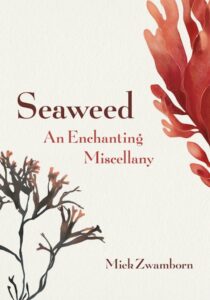 For bibliophiles, “miscellany” is a word rich in potential delights. Akin to “compendium” and “anthology,” it holds up to the reader the possibility of discovery, not only of particular bits of new knowledge, but perhaps the uncovering of vast areas of study heretofore wholly unbeknownst to them. Much like a walk through a fresh spring meadow or along an ocean beach just after a storm, it is replete with discoveries both grand and sublime just waiting to be made.
For bibliophiles, “miscellany” is a word rich in potential delights. Akin to “compendium” and “anthology,” it holds up to the reader the possibility of discovery, not only of particular bits of new knowledge, but perhaps the uncovering of vast areas of study heretofore wholly unbeknownst to them. Much like a walk through a fresh spring meadow or along an ocean beach just after a storm, it is replete with discoveries both grand and sublime just waiting to be made.
Indeed, should you find yourself walking along a post-tempest beach, some of the discoveries you may make will very likely involve any number of the marine algae often referred to in English as seaweed. Diverse in their sizes, shapes, and colors, these multicellular macroalgae are a familiar but often misunderstood sight along ocean beaches, from which many of their species have been collected by humans for food, medicine, and other uses not just for generations or even centuries but literally millennia.
Miek Zwamborn has a particular interest in these algae, and living as she has been for the past decade and a half on the Isle of Mull, she is well-placed in one of the world’s great locations for the history of human collection and use of seaweed. Therefore it is entirely appropriate that in 2018 she published her book Wieren with Uitgeverij Van Oorschot. This was promptly translated from its original Dutch into German by Bettina Bach and published by Matthes & Seitz Berlin as Algen; Ein Portrait as part of their Naturkunden series.
Now, keeping with their high commendable and much-appreciated ongoing efforts to make noteworthy books of continental European natural history available to an English reading audience, Greystone Books has published Michele Hutchison’s translation of Algen under the title alluded to in the opening paragraph of this Newly Noted entry: Seaweed, An Enchanting Miscellany.
